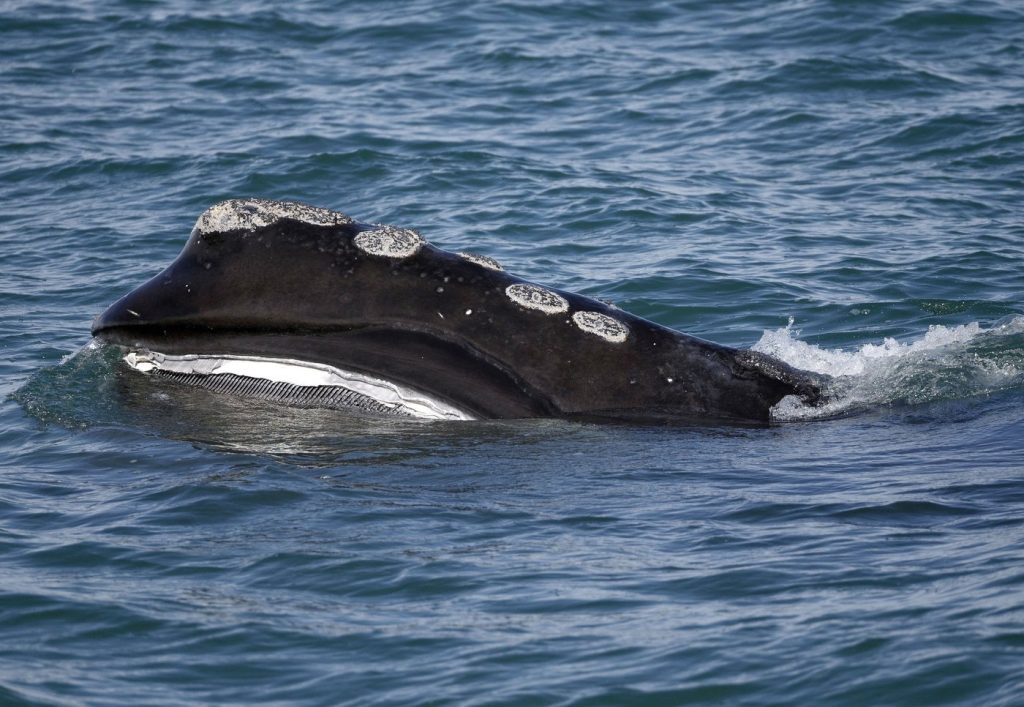The North Atlantic right whale population, which has been facing significant declines over the years, is now showing signs of recovery, albeit at a slow pace. According to recent figures released by a whale conservation group, the estimated population of North Atlantic right whales for the year 2024 stands at 384, reflecting an increase of 2.1% from the 376 recorded in 2023.
Heather Pettis, a representative of the North Atlantic Right Whale Consortium, expressed cautious optimism about the population growth, stating, “It’s slow, but we’ll take slow growth over decline any day.” She emphasized that the stabilization of the population marks a positive change after years of decline, with numbers having fallen from a recent peak of 500 individuals in 2011 to a low of 359 in 2020. The figures show a gradual recovery, with the population estimating at 356 in 2022, then rising to 376 in 2023.
Pettis characterized the new estimate as “great news,” indicating that any increase, no matter how modest, is better than previous downward trends. The population estimate for 2024 also includes a count of newly born calves, a crucial factor for understanding the reproductive success of the species. In 2025, so far, only 11 calves have been born in the southeastern U.S. waters, which is fewer than anticipated. Pettis noted that researchers had hoped for a higher percentage of the 72 reproductive females to give birth, but four first-time mothers in 2025 present a promising sign for future growth.
Last year, 20 calves were born, and Pettis remarked that a successful year for right whales would typically feature numerous repeat mothers along with new births. The current year, however, has seen no recorded deaths among right whales, with a single incident of vessel strike and one case of entanglement with fishing gear reported. These incidents are significant threats to the species, and scientists remain vigilant, as 50% of the 2024 entanglements occurred in the latter half of the year.
The past year was particularly challenging, with five deaths reported alongside 16 entanglement cases, where gear remained attached in 10 instances. Additionally, there were eight reported vessel strikes. The North Atlantic right whales travel between Florida and the Gulf of St. Lawrence off Atlantic Canada, traditionally migrating to the Bay of Fundy for feeding. A notable shift in recent years has seen them favor feeding grounds in the Gulf of St. Lawrence, likely due to changing ocean temperatures impacting their food sources.
Pettis highlighted the whales' adaptability, stating, “They are going to go where there’s food, and if that food source is shifting, they are going to shift.” She also emphasized the need for rapid response in developing protection measures that correspond to these changing migration patterns. The new population data was disclosed ahead of the North Atlantic Right Whale Consortium's annual meeting in New Bedford, Massachusetts, which begins on Wednesday. This two-day meeting aims to draft an annual report detailing the state of the right whale species, to be published early next year.
The North Atlantic Right Whale Consortium comprises research and conservation organizations, along with representatives from the fishing and shipping industries, and includes U.S. and Canadian governmental bodies. The ongoing collaboration among these diverse stakeholders represents a vital effort toward ensuring the survival of the North Atlantic right whales, as they navigate a precarious existence in their shifting habitat.










